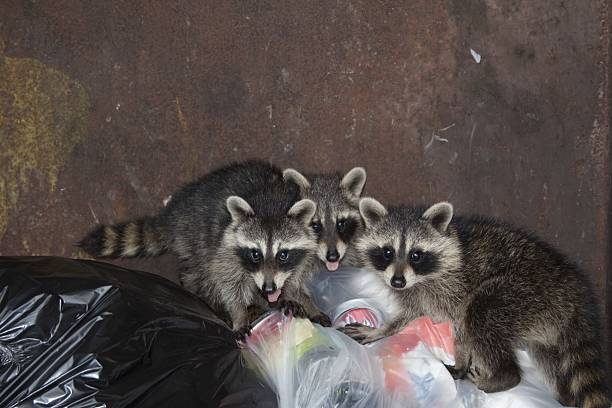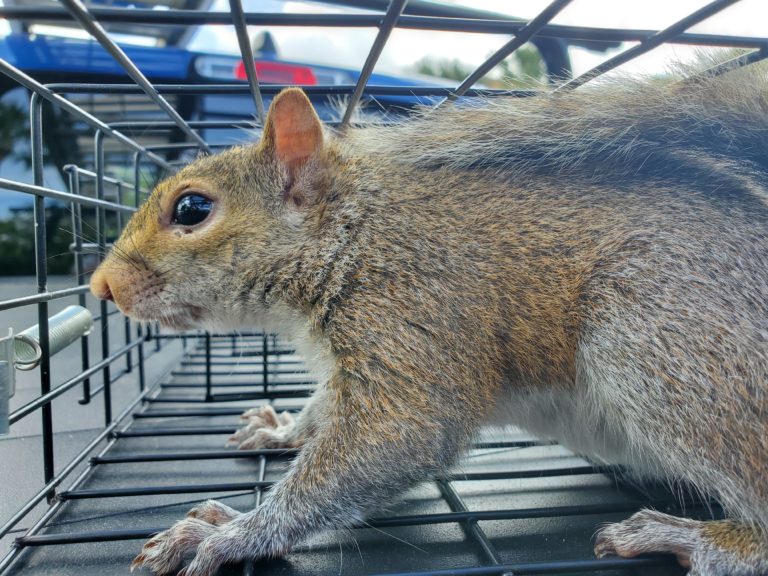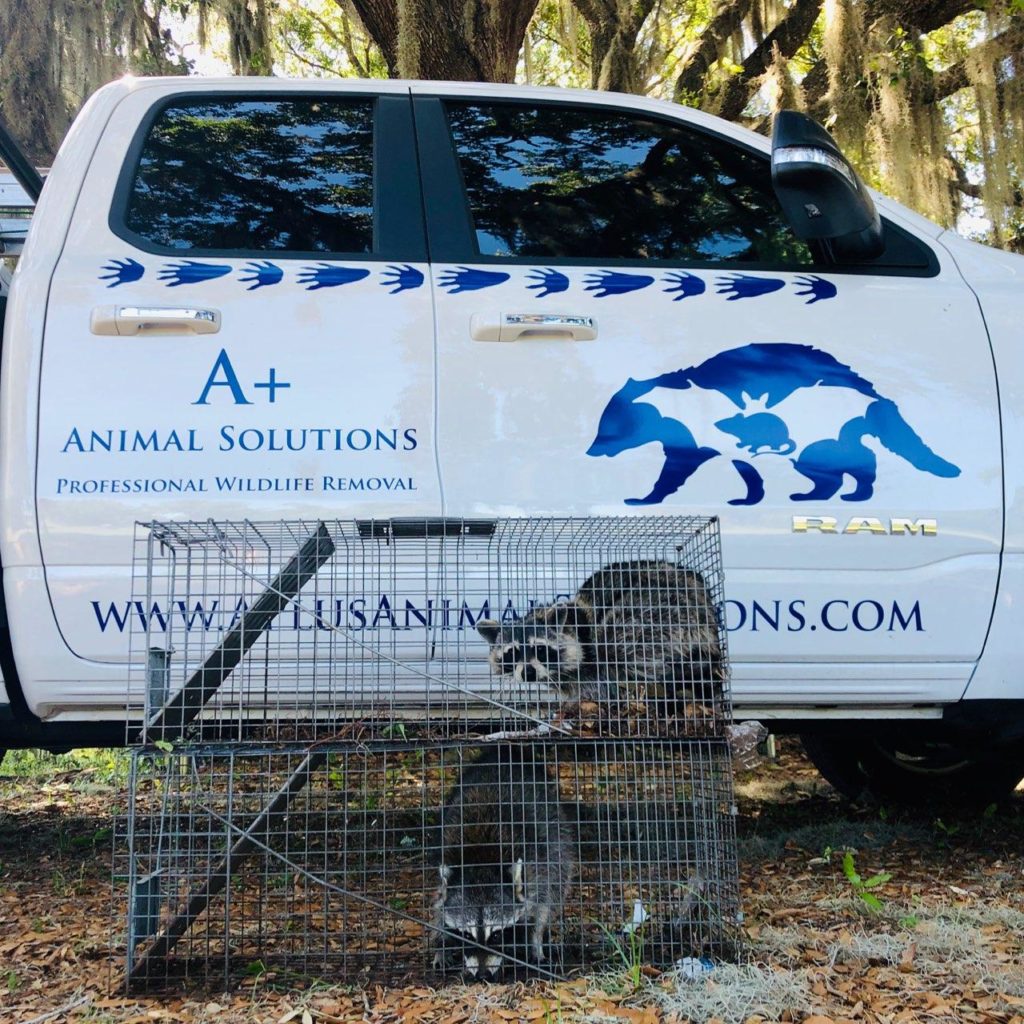Nature Friendly Squirrels Removal in Florida
Fast & Accurate A+ Wildlife Control Services In Florida | SQUIRREL REMOVAL
Cute as they are, squirrels are one of the most ubiquitous nuisance animals in the United States. Although squirrels usually live in trees, they can also inhabit attics and garages of houses. They are curious, agile, and great climbers. The results of a squirrel infestation can range from disturbing noises to flea or lice infestations, to a potential fire hazard from chewed off electrical wire insulation. In this post, we’ll examine what attracts squirrels and how to carry out a comprehensive squirrel removal.
Why are There Squirrels on Your Property?
Squirrels are attracted to an eclectic variety of food sources. Although known for their deep love for nuts – hickory nuts, acorns, beechnuts, and walnuts, among others – they are also ravenous seed eaters. Gardens are a perfect spot to satisfy their unquenchable appetite for veggies, ripe nuts, and buds and blooms of flowers.
Furthermore, squirrels are attracted to dry and warm spaces to build their nests. This makes spots like garages and attics attractive. Female squirrels prefer attics because they are a warm, dry, and safe place to raise babies (kits).
Some of the telling signs that you have a squirrel in your house include:
- You hear scampering and jumping sounds in your attic or persistent scratching in wall cavities.
- You see squirrel droppings and footprints around.
- You see damaged entry points and (or) interior damages.
- You smell a pungent odor coming from somewhere in your home.




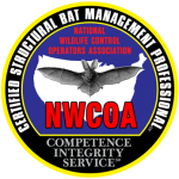





Squirrel Removal Process
Because of the damage, disturbance, and health risks they cause, it is advisable to prevent squirrels from entering your homes. In situations where they made an abode in your house, it is important to remove them as humanely as possible:
1) Trapping
Trapping is the most effective means of squirrel removal. However, squirrel trapping is subject to state law. That is why it is advisable to involve a licensed wildlife removal service to avoid legal issues. Furthermore, they are knowledgeable in squirrel behavior, and so they are adept at identifying the most effective trapping strategy. The steps in trapping include:
- Selecting the right type of trap to use.
- Choosing the perfect spot to place it. This requires mastery and would significantly improve the
chances of success. - Using the appropriate bait.
- Monitoring the trap frequently and relocate the squirrels once they’ve been caught.
2) Squirrel Repellents
Once squirrels have found a comfortable place to stay with abundant food supply, they are usually reluctant to leave. Several toxins are said to drive away squirrels but the problem is that they, most times, also affect our pets and plants. However, a variety of homemade recipes are known to drive squirrels away. A spray made from the combination of jalapenos, onions, and cayenne pepper, boiled in water is an example of such a recipe. Also, applying grease to the supporting poles of bird feeders will preclude them from getting to seeds
3) Decontamination and Repair
Squirrel feces and urine encourage the growth of mold, which can potentially cause diseases like Salmonella and Leptospirosis. Their remnants can attract insects like cockroaches and the odor might be inviting to other squirrels. Therefore, it is necessary to decontaminate infected spaces.
Furthermore, all damaged structures, including water pipes, electrical wires and insulation, and ceilings, must be repaired to prevent reentry.


Squirrel Removal Process
1) Make your yard less attractive to squirrels:
This involves removing trees and foliage to make the terrain unpalatable to them. Also, cut down tree branches that could serve as bridges to the attic of your house.
2) Seal potential entry points:
Cover chimneys with chimney caps. Never leave your doors open carelessly. Metal flashing can be used as a sealant to prevent squirrels and other animals from chewing through vulnerable spots into your home.
3) Keep squirrels from bird feeders.
This can be achieved by using anti-squirrel feeders or making the feeders inaccessible.
Damage That Squirrels Do to Your Home or Building
Squirrels, being relatively small pests, tend not to be particularly destructive unless left to destroy for a long time. For this reason, many people are concerned with evicting squirrels as soon as they begin to infest a home, even if it is just a singular squirrel. But what damage can one squirrel do?
Interior damage
Wrecking both interiors and exteriors of homes is the squirrel’s specialty: they chew open sidings and undersides of eaves to create openings, and once they are through, they tear through fiberglass insulation to get inside your home. This damage is particularly troubling not only due to the fact that it costs money to fix, but also due to the opportunity it presents to other pests—mice, rats, and bats to name a few—to enter your home. If you ever discover an opening created by a squirrel, seal it as soon as possible. To ensure the offending squirrel does not attempt to tamper with your seal, spray the area in squirrel repellent.
Once inside, squirrels can wreak havoc on vulnerable internals of your home: they chew on PVC pipes, which can lead to leaks and mold damage; they chew on wires, stripping their insulation and posing a fire risk; and they leave their droppings everywhere, contaminating whole attics and possibly even your water supply. If you are unsure whether the droppings in your attic come from a squirrel, A+ Animal Solutions can identify them for you, drawing from ten years of experience in the pest control business. It is vital to correctly identify the animal troubling you, as squirrels can be easily confused for rats, which pose a greater danger than squirrels in both the damage they do and the diseases they spread around your home.
Exterior damage
While squirrels can cause significant damage inside your home, they are an even bigger nuisance outside it: they strip bark from trees and chew on branches, exposing any trees in your garden to disease; they often ravage gardens, destroying flower bulbs, vegetable patches, and planted seeds; and they cause extensive damage to lawn furniture, chewing on railings and chairs. Usually, squirrels can be kept away from garden plants through netting and chicken wire, although preventing damage to lawn furniture requires a repellent-based approach: soap or capsaicin-based repellents rubbed on wood act to discourage squirrels trying to chew them. However, avoid using sticky repellents, which can both endanger birds landing on your furniture and cause damage to the furniture itself.
How to Get Squirrels Out of an Attic
Squirrels may look cute, but all it takes to unleash the beast in them is to have an infestation problem. A squirrel infestation in the attic is one of the most challenging wildlife problems you can encounter.
First off, squirrels will tear off the insulation, chew on wood, wires, and pipes to obtain materials to build their nest. What’s more, they’ll keep on chewing to keep the length of their incisors in check.
Asides from these damages, squirrels are also carriers of several zoonotic diseases like tularemia, typhus, and ringworm. Hence, they also pose several health risks to humans and pets.
Hence, getting rid of them as soon as possible is a must. As a professional wildlife company, A+ Animal Solutions also specializes in the removal of squirrels from attics. And this post slowly walks you through the required steps.
Step 1: Assess the infestation.
Before you take any action, you must be sure of exactly what you’re dealing with. First off, you need to be certain you’re dealing with squirrels. From the scurrying sounds to teeth marks on wood to droppings to the nest itself, watch out for signs of a squirrel infestation.
But more importantly, you want to confirm if there are baby squirrels (or kits) in the attic as that is what determines what and what you cannot do. In general, it should be assumed that a squirrel living in an attic from February to October is a mother with babies unless proven otherwise through a thorough inspection.
Step 2: Get rid of the animal.
There are three major approaches for getting rid of squirrels from the attic. They include:
- Humane harassment
This involves making your attic so uncomfortable for squirrels that they are forced to leave. Examples of what you can do include placing a bright light or talking radio in your attic.
Scent repellents like cayenne pepper, apple cider vinegar, and garlic can also be used to repel them.
- Exclusion
This is best suited if you have a lone squirrel in your attic. Here’s how it works. Thoroughly inspect every nook and cranny of your attic to determine how it has gotten in. Then, seal up all the holes with caulk, steel wool, or wire mesh, leaving one hole open.
In the last hole, install an exclusion device. Once the squirrel leaves through the exclusion device, it is unable to get back in.
- Live Trapping
If you have a mother squirrel and her kits in your attic, and you’re unwilling to wait them out, this might be your best option. When the mother’s gone out to forage for food, wear hand gloves and pick up her kits. Use these kits as bait to lure the mother into a trap when she returns.
Live trapping can also be used to capture a lone squirrel. The best bait to use is peanut butter. Spread peanut butter directly onto the trigger plate.
Once the animal is captured, it can then be euthanized or relocated, depending on what’s legally acceptable in your district.
Step 3: Cleanup and repairs
Squirrels leave lots of waste, just as they cause lots of damage. That’s why you need to decontaminate your attic after getting rid of the squirrel. You also need to repair all the damages they have caused.
How to Prevent Squirrels from Returning
Without putting preventive measures in place, it’s only a matter of time before pesky squirrels return. That’s why you must:
- Eliminate easy access to food and shelter on your property.
- Trim off tree branches overhanging your roof.
- Keep your yard clean at all times.
- Seal up all potential entry holes into your attic.
- Repair vulnerable spots around your roof.
Need help dealing with pesky squirrels in your attic? Promptly contact us today at A+ Animal Solutions to put an abrupt end to their activities.
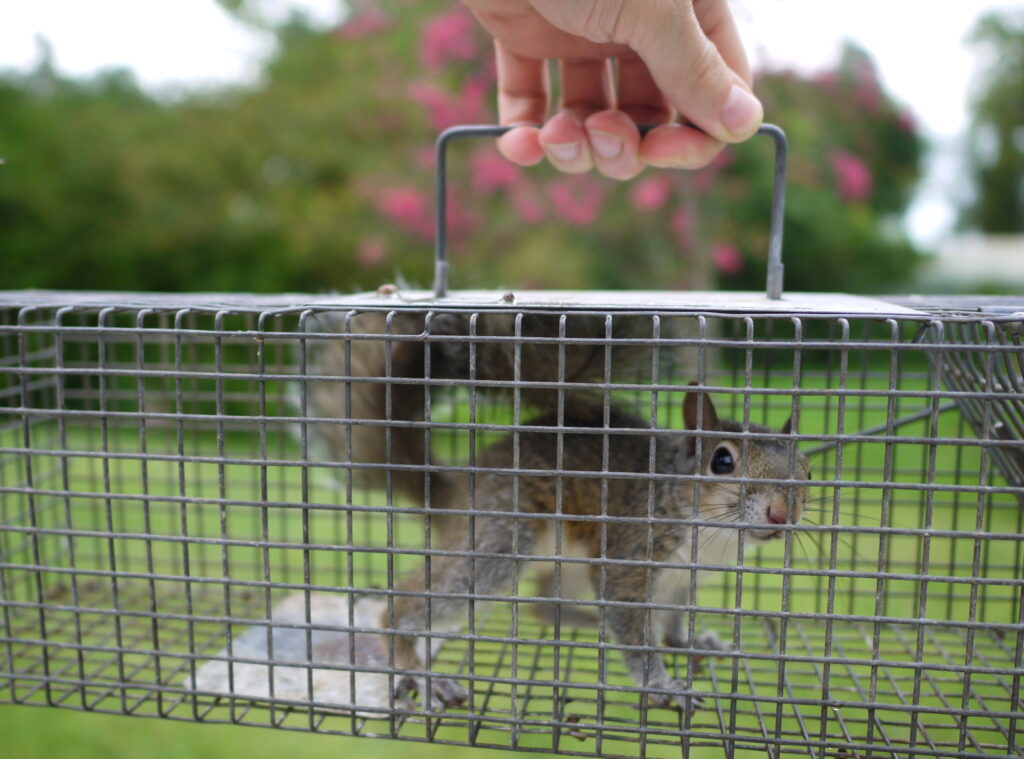

How to Remove Squirrels From Chimney?
It’s not uncommon to discover wild animals squatting inside your chimney, particularly if you don’t use any protective measures on your chimney. Things like a chimney cap can really go a long way in deterring wild animals from getting inside, which is why we really recommend getting one.
But presumably, if you’ve clicked on this article, you don’t have one, and also have a squirrel inside your chimney.
Why are squirrels inside the chimney dangerous?
Aside from the obvious risk of them running down into your house, squirrels inside the chimney are also really dangerous, because they pose the risk of a fire. When you light a fire in the fireplace, without first checking that the chimney is clear, squirrels can be caught unaware and burned alive inside your chimney. Even if they do manage to get out, their nests will stay behind, and act as great kindling.
If something burns like that inside your chimney, this can either seriously damage the chimney structure itself, or even endanger the rest of the house, so you want to get squirrels out right away.
But how?
- Try to lure it down.
A common approach to a squirrel inside the chimney is to simply open the damper, and allow the squirrel to come down into the house. You may also want to use some bait to facilitate that.
However, you may want to use a live trap at the base of your chimney flue, to also stop the squirrel from running wild into your home (as that may also cause quite a bit of damage).
- Try to trap it from above.
If getting a squirrel inside your home isn’t your idea of a good time, you may also want to try setting a live trap at the top end of the chimney. Remember that the squirrel will frequently go in and out the chimney itself, in search of food and water. So this can be a really efficient way of stopping the squirrel along its merry path. Obviously, we recommend checking on the live trap regularly, so as not to leave the animal trapped and scared any longer than necessary. Once trapped, you can attempt to relocate the squirrel to a safe area where it won’t be able to bother you or anyone else in the area any longer.
Once the trap on the roof is set, you can try to gently coax the squirrel back up the chimney by making loud noises (radio, or even smashing pots and pans together) at the bottom end. Often, the loud noises will be enough to scare the squirrel out of the chimney, and allow you to fix a chimney cap, or at the very least, some protective mesh to prevent future intrusions.
- Make sure you remove the babies.
A super important part in safely removing squirrels from your chimney includes checking for baby squirrels since these are also quite likely to be found up there. You can do this by shining a light from above into the chimney, and may even attempt to remove the squirrel babies yourself using a long chimney snare pole.
However, babies can make your job significantly more difficult, since they most likely won’t be able to exit the chimney on their own, in case of danger. This is where a wildlife removal specialist comes in really handy. While it may be possible to remove adult squirrels efficiently, getting squirrel babies out is a trickier matter, and is best left to an expert.
Whatever you do, remember to remove the nest and debris as well, and then fit your chimney with a very necessary chimney cap!
CALL NOW
GET FAST QUOTE



